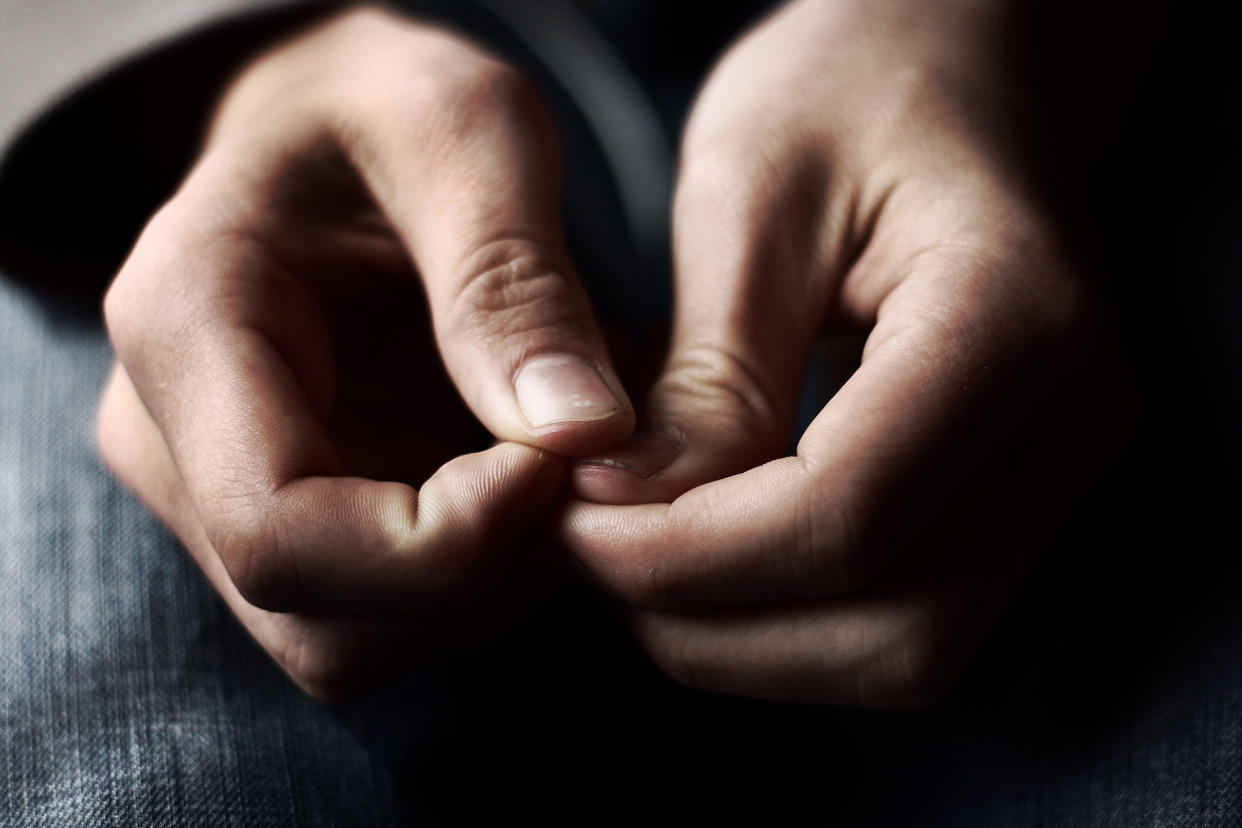A dad of two almost died from sepsis after biting his nails

For most people, nail biting is just a bad habit. For a British man in his late 20s, it was nearly fatal.
Twenty-eight-year-old Luke Hanoman considers himself lucky to be alive after he contracted sepsis — a potentially fatal complication of an infection — as a result of biting a fingernail.
The father of two recently told The Sun that he remembers biting the skin down the side of one nail and, although it hurt a bit at the time, not giving it any thought. Over the ensuing week, however, he started developing flulike symptoms: cold sweats, shakiness and feeling hot.
“I used to bite my nails all the time,” Hanoman said. ”It was a nervous thing.”
“Then my finger started swelling up and I had this unbearable throbbing,” he said. “I started going really weird and I couldn’t focus.”
His mom eventually got him to go to the hospital, where he found out he was indeed suffering from the potentially life-threatening condition.
An example of the immune system going into overdrive in response what it perceives as a threat, sepsis occurs when chemicals released into the bloodstream to fight an infection trigger inflammatory responses throughout the body. That inflammation can lead to all sorts of physiological effects, including organ failure.
ALSO SEE: One woman’s chronic ‘runny nose’ was actually a brain leak—here’s what that means
The condition has three stages: sepsis, severe sepsis, and septic shock. Symptoms of sepsis include a fever or low body temperature and elevated heart and breathing rates.
Severe sepsis is marked by changes in mental ability, decreased urine output, patches of discoloured skin and trouble breathing, among other symptoms.
A medical emergency, septic shock features the same symptoms as severe sepsis along with very low blood pressure.
As Hanoman can attest, treatment includes IV antibiotics and IV fluids. It can also involve vasoactive medications to raise blood pressure and insulin to stabilize blood sugar. Sometimes, people need dialysis to help the kidneys or surgery to remove the source of an infection.
Although contracting sepsis is certainly possible from cutting the skin via nail-biting, it’s important to keep things in perspective, says Vancouver dermatologist Dr. Monica K. Li. She explains that Hanoman’s case is unusual.
“If you have any break or breach in the skin, there’s a risk [of sepsis],” Li says. “Our skin is our protective barrier against external microbes, organisms, noxious substances, and environmental toxins, everything in the outside world that we want to protect our internal organs from. It’s our largest visible organ. If ever that barrier is breached for whatever reason — whether it’s biting your nails, a surgical procedure, or a scratch — and external microorganisms get in through that breach, there can be an infection.
“But sepsis, a systemic infection in the bloodstream, [from biting your nails] is really, really uncommon,” she says. “It’s very odd.”
ALSO SEE: This woman suffered a ‘life-threatening’ infection after getting her eyebrows tattooed
According to the Canadian Sepsis Foundation, the most common types of infections that lead to sepsis are pneumonia, abdominal infections, kidney and urinary tract infections, certain viruses such as influenza, and parasites like malaria.
Sepsis affects 30,000 Canadians each year, according to the Canadian Patient Safety Network; more than one-third will die if not treated quickly and appropriately.
Risk factors for sepsis include chronic disease, age, male gender, tobacco use and the use of immunosuppressive agents such as chemotherapy drugs.
As for nail-biting, it can be a short-lived, relatively harmless action or a behaviour that turns into a serious, long-term problem. Onychophagia is the term used to describe the latter, which is related to obsessive-compulsive disorder. It can result in visible damage to the fingernails and may have even worse effects: dental problems, abscesses, and infections among them.
A few different approaches can help people stop biting their nails. According to a 2017 study in the Journal of Mood Disorders, these include alternatives such as gum-chewing to satisfy orally motivated urges and cognitive behavioural therapy. Barrier interventions that block contact between the mouth and nails — such as gloves or retainer-style devices — can also help.
Let us know what you think by commenting below and tweeting @YahooStyleCA!
Follow us on Twitter and Instagram.



